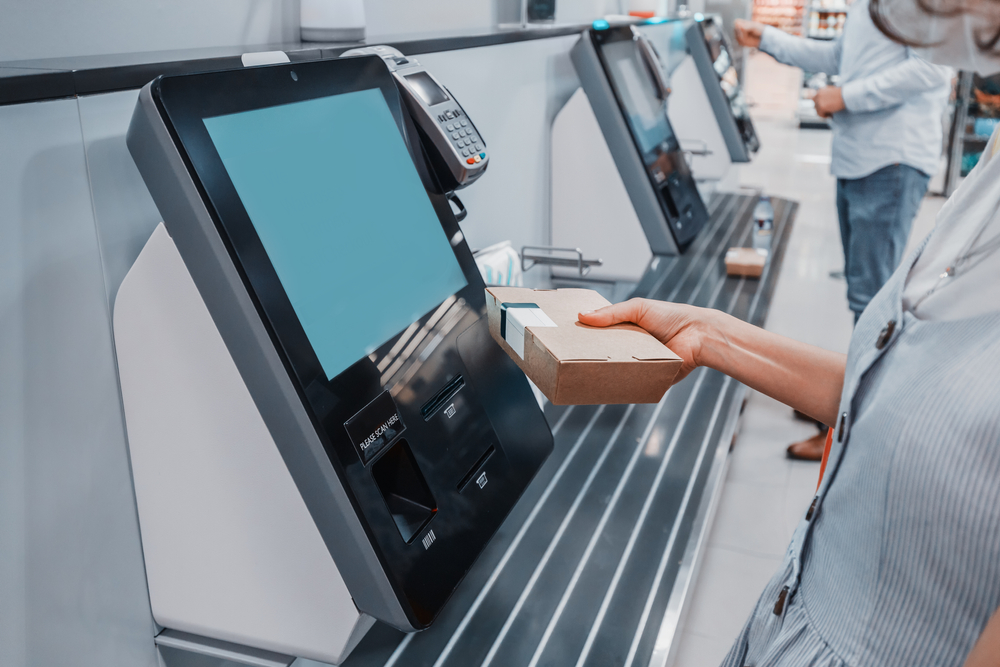Self-service is part of the modern world we live in. Whether it’s scanning items at a supermarket self-checkout aisle, or browsing through an online knowledgebase to find out how to resolve an issue with a digital service, we’re all used to the ‘DIY’ approach these days.
But what do we think of all this, really? When the topic of self-service comes up, it’s commonplace to hear hyper-positive stats like the fact that 75% of people believe self-service is an efficient way to address customer service issues. Or 67% say they prefer self-service over speaking to a company representative.
Great! A clear majority of people love self-service! That’s that settled, then. Time to roll out more kiosks and leave consumers to get on with it…
But things in life are rarely so black and white. The above stats came from an oft-quoted survey carried out by the aptly named Nuance Enterprise.
As a kiosk manufacturer whose business is self-service, we believe it’s important to treat these things with a little nuance. Yes, we firmly believe self-service is a wonderful thing, we wouldn’t do what we do if it was otherwise.
But that doesn’t mean we dismiss any suggestion that self-service might not always be all things to all people. For example, a different Nuance study found that 58% of people report that at times they can’t do what they want via self-service. Perhaps an even more significant finding is that 59% of people say they get frustrated when they then have to reach out to a customer service representative having tried the self-service route first.
For us, these are important things to know. And not just as a warning against being complacent. It’s insights like this that help us do our job better, either by improving kiosk options so they are more effective at addressing consumers’ issues more of the time, or by deploying kiosks in the right way as part of a larger customer experience strategy.
Consumers prioritise choice over independence
When high approval ratings for self-service get thrown around, the temptation is to make the next step and ask, why don’t we make everything self-service? But this oversimplifies things, and isn’t actually what people want.
A cautionary tale emerged in December 2022 when Tesco announced it was stripping out more staffed checkouts at its largest stores in favour of self-checkout, apparently because of a lack of demand for its staffed POS. In response, more than 230,000 people signed a petition calling for Tesco to reverse its decision and bring back more staffed checkouts.
There are several things that can be unpicked from this response. One is the fact that supermarket self-checkouts are a particular source of exasperation for many shoppers. We’ve all been there – item not found, unexpected item in the baggage area. Then we have to wait for a member of staff to help us, and we are annoyed we couldn’t just go to a staffed checkout in the first place because there aren’t enough of them open.
As those Nuance findings show, a lot of us get very frustrated when we have to look for human assistance anyway after trying the self-service option. It’s not the smooth, straightforward experience we wanted. It feels like we have wasted our time.
There are broader issues at play here, too. A study by PwC found that 78% of UK consumers feel they will want more human interaction as they shop in the future even as retail technologies like self-service improve. This seems like a paradoxical position, but underlines that ‘the human touch’ remains something people value highly. The same study found 59% of people believe a lot of companies have lost touch with the human element of customer experience.
Some of this can be explained as people simply wanting to choose for themselves whether they help themselves or ask a member of staff for assistance, not be corralled into one or the other. Underlining the importance of choice, an IBM study found that a quarter of consumers wanted to see a broader range of self-service options available even within single retail settings.
Enthusiasm for self-service is not in question. But it would be a mistake to believe this enthusiasm is unconditional. People’s positive opinions about self-service quickly fade when the technology doesn’t work or fails to meet their expectations, which is true of any kind of technology.
Here at Acante, these are the deeper insights into what people really think about self-service that we value. Yes, we love kiosks. But we don’t fool ourselves into thinking they are an end in themselves. What most people want is the best possible experience, and a lot of that comes down to having choices about how they can make a purchase, resolve an issue, or find a piece of information they are looking for. Choice about when to go to a kiosk, when to ask a member of staff, when to rely on your own smartphone and so on is ultimately the most ‘self-service’ thing of all.
We build our solutions with this bigger picture in mind, with an understanding that kiosks do fit into a wider experience based on flexibility and choice. And by focusing on that, we can better focus on making sure our kiosks deliver on what people want them for, when they want them.




